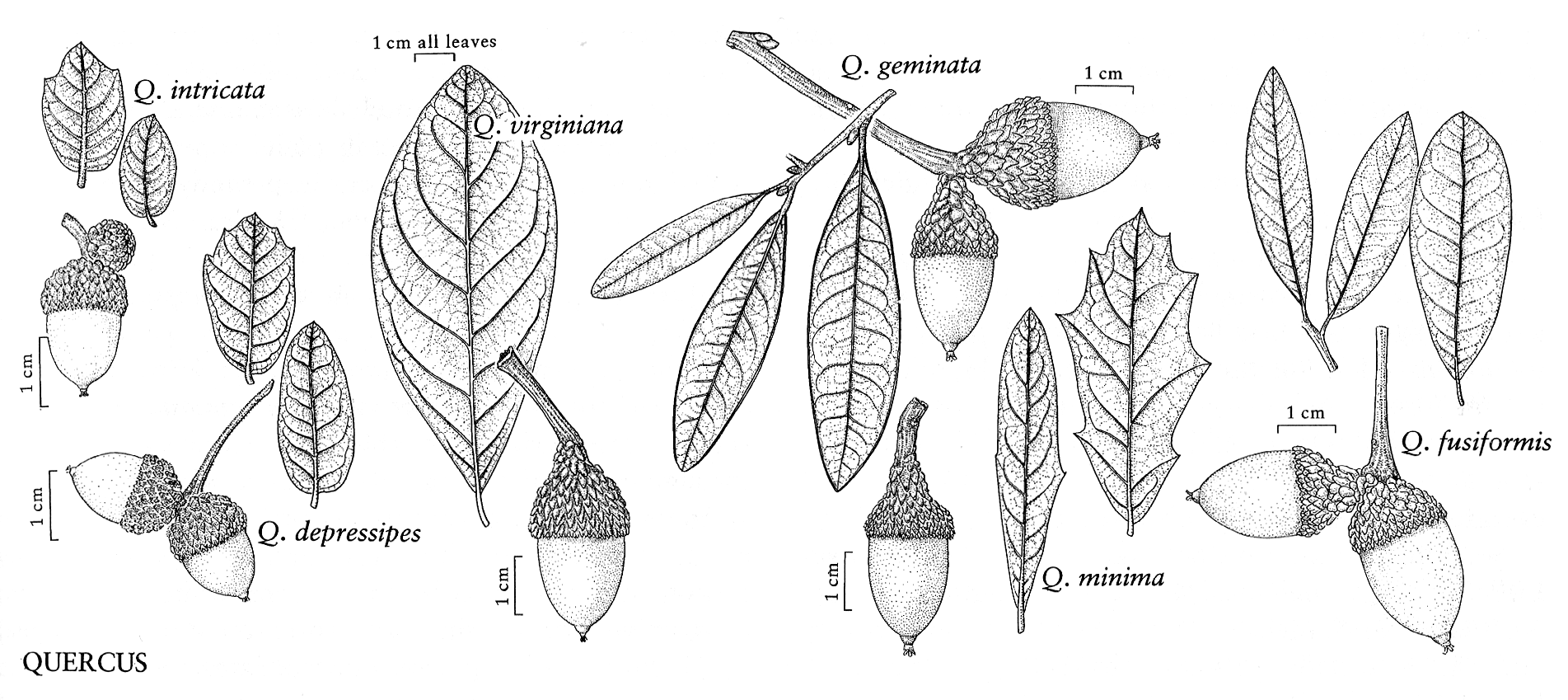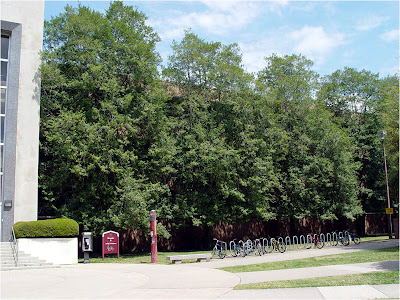 Japanese privet Ligustrum japonicum is one of three types of privet on campus. |
Ligustrum japonicum or Japanese privet is an evergreen shrub or small tree growing to 2–6 m. It is commonly planted as a hedge because of its foliage and fragrant flowers. The plant is dispersed by birds and is quite shade tolerant. This has helped it establish wild populations in Florida and elsewhere around the world.
Description: Japanese privet is an evergreen shrub or small tree growing to 2–6 m with smooth, pale grey-brown bark. Flowers: Fragrant white, with a four-lobed corolla 5–6 mm long; they are borne in clusters 7–15 cm long in early summer. Fruit: An oval drupe, 10 mm long ripening to purple black coler. Leaves: Opposite 5–10 cm long and 2–5 cm wide, glossy dark green above, paler glaucous to yellowish green below, thick and leathery textured, and entire.
Similar to: Japanese privet is closely related to the Chinese privet Ligustrum lucidum, differing in its smaller size (L. lucidum being as tall as 10 m), and elongated oval (not subglobose) fruit







 A medium sized live oak on FSU campus.
A medium sized live oak on FSU campus.
